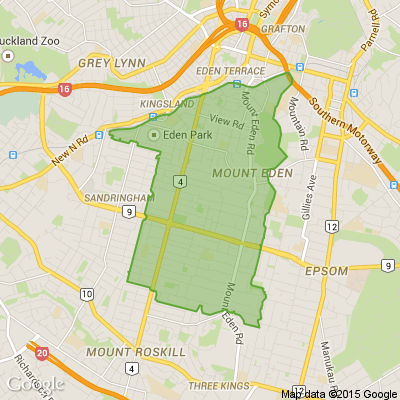Jobseeker Work Ready benefit numbers increase by 12% in a year
The Government says the benefit numbers have long been forecast to get worse before they get better – and there were “positive signs” its approach to social welfare was working.
But Labour says New Zealand families are continuing to suffer – and the Government is making the wrong decisions and mismanaging the economy.
There are two categories of Jobseeker benefits – “work ready” for those who can work now – and “health condition or disability” for those who can’t work right now for health reasons.
New data from the Ministry of Social Development (MSD) shows that between September 2023 and September 2024, the number of people receiving the weekly Jobseeker Work Ready payment increased by around 12,300 people or 11.8%.
People receiving the “health condition or disability” payment increased by 11,000 people or 14.3% compared with September 2023.
However, more recent month-on-month data shows the tide is starting to turn, at least for Jobseeker Work Ready numbers, which decreased by about 300 people or 0.2% in September 2024 from the previous month. This was the first decrease since April 2024.
The number of people receiving the health condition or disability payment increased by about 2000 people or 2.3% in September compared with the previous month.
Social Development and Employment Minister Louise Upston described rising unemployment as a “lingering consequence” of years of high inflation, high government spending, and periods of economic recession.
“Jobseeker numbers have long been forecast to get worse before they get better, and we knew this when we set our target to reduce the number of people on Jobseeker Support by 50,000 over six years,” Upston said.
“We’re already seeing positive signs that this Government’s more proactive approach to supporting job seekers is working, with the latest monthly stats showing more than 2000 people cancelling their Jobseeker Benefit because they found work between July and September compared to the same period last year.”
The coalition Government has been focused on Jobseeker beneficiary numbers and has a goal for 50,000 fewer recipients in the next six years.
The Government has ramped up its threat of sanctions for Jobseeker beneficiaries not fulfilling their work obligations by introducing new requirements (such as attending a seminar within a fortnight of starting the payment) and a new beneficiary traffic light system.
At the time, advocate Brooke Pao Stanley, who runs Auckland Action Against Poverty, said such moves to increase sanctions would not help people get into work and would instead cause further stress to vulnerable people already living in stressful situations.
Labour’s social development spokeswoman, Carmel Sepuloni, said the Government’s actions were “taking us backwards”.
“It’s a tough time for New Zealanders. They have made the deliberate decision to lay off thousands of public servants and have cut government investment in infrastructure, like for Dunedin Hospital and school builds.
“Beneficiary numbers are skyrocketing even past Treasury’s predictions. Ministers have made the wrong choices and are mismanaging the economy at the expense of New Zealand families who are suffering from growing unemployment.”
Overall figures for main benefits – which include Jobseeker benefits as well as other payments like Sole Parent Support and the Supported Living Payment – increased by about 2500 (0.6%) month-on-month and by 29,100 (8%) year-on-year.
===========================================
www.nzherald.co.nz...
==========================================
Poll: Are our Kiwi summer holidays helping us recharge, or holding the economy back? ☀️🥝
There’s growing debate about whether New Zealand’s extended Christmas break (and the slowdown that comes with it) affects productivity.
Tracy Watkins has weighed in ... now it’s your turn. What’s your take? 🤔

-
73.1% We work hard, we deserve a break!
-
16.2% Hmm, maybe?
-
10.8% Yes!
Wayne Brown backed by billionaires and developers in $611k campaign haul
Celebrities, billionaire Graeme Hart and a who’s who of property developers each gave up to $50,000 to fund Wayne Brown’s mayoral re-election campaign.
Electoral returns made public today show Brown was flush with about $606,000 in campaign funds, while his only serious competitor, Whau councillor Kerrin Leoni, received just $16,076 in four donations over the $1500 declaration limit.
She relied heavily on donations of less than $1500 to raise $83,111.83 to run her campaign, while Brown spent $323,872, with nearly $280,00 left over from his wealthy donors.
Leoni, a low-profile first-term councillor, stood little chance against the high-profile Brown, who romped home for a second term by a margin of 100,000 votes.
Among the donors who gave $5000 to Brown were former All Black and Waiheke resident Marc Ellis, and Black Knights Football, which refers to Auckland FC, of which former All Black Ali Williams and his wife Anna Mowbray are minority co-owners.
Williams attended Brown’s election-night party at the West End Tennis Club at Coxs Bay, a short walk from the $24 million coastal home he shares with Mowbray.
Through his Rank Group company, Hart, who is worth an estimated $12.1 billion, gave $50,000 to Brown’s campaign. Property investment firm Tramco Group, whose directors own big landholdings on the Auckland waterfront, also chipped in with $50,000.
Other donors included Precinct Properties ($10,000), engineering firm BECA ($5000), Park Hyatt Hotel ($18,400), Hancocks Wine ($8000), Golf Warehouse ($20,000), Bayleys Real Estate ($10,000) and Hopper Developments ($5000).
Leoni, who was the Labour councillor for Whau but stood as an independent in the mayoral race, received donations from former Auckland Mayor and Labour leader Phil Goff ($1500), former Labour minister Judith Tizard ($5000) and longtime Labour operative Greg Presland ($7576).
She said Brown had the advantage of building relationships during his first term to raise donations, but she was proud of obtaining 20% of the vote by raising and spending $83,000.
The greater handicap during the election campaign was the lack of mainstream media coverage, with live television debates largely watched by older people, who formed the largest group of voters, she said.
The election resulted in the lowest super city turnout of under 30%.
Leoni, a mother of twins who has degrees in politics and economics, Māori development and social services, said she was having a break from the council to refocus and would decide on what to do next in the New Year.
Brown, who has said he will not seek a third term, declined to say what would happen to the nearly $280,000 left over from his campaign, saying he does not comment on other people’s donations, except to say they were a sign of the level of support for what candidates stood for.
Auckland Council electoral officer Dale Ofsoske said there were no rules governing how candidates used leftover campaign funds, though many choose to keep them for future campaigns.
Candidates could do what they liked with the money, he said.
Three years ago, Brown raised $310,000 in donations and had to dig into his own pocket to top up the $470,00 cost of his campaign.
Donations of $10,000 or more to Wayne Brown
======================================
Tramco Group - $50,000
Rank Group - $50,000
CP Group - Aphi Funds manager - $25,000
Peninsula Capital $25,000
Knight Investments Ltd - D Nakhle - $20,000
Hugh Green Ltd - $20,000
Stonewood Group - $20,000
Golf Warehouse - $20,000
Aedifice Development - $20,000
AHL Park Hyatt Hotel - $18,400
Clifftop Services - PC Cooper - $15,000
Mr MJ Todd - $15,000
Gilligan Rowe & Associates - $11,000
Liu Vincent - $10,000
Southside Group - Chris Jones - $10,000
Van Den Brink - $10,000
Williams Corporation - M. Horncastle - $10,000
Precinct Properties - $10,000
Oyster Capital - $10,000
Bayleys Real Estate - $10,000
N McKenna - $10,000
Donations of $1500 or more to Kerrin Leoni
====================================
Greg Presland - $7576
Judith Tizard - $5000
Te Ata Thompson - $2000
Phil Goff - $1500
====================================================
Brain Teaser of the Day 🧠✨ Can You Solve It? 🤔💬
How many balls of string does it take to reach the moon?
(Peter from Carterton kindly provided this head-scratcher ... thanks, Peter!)
Do you think you know the answer? Simply 'Like' this post and we'll post the answer in the comments below at 2pm on the day!
Want to stop seeing these in your newsfeed? No worries! Simply head here and click once on the Following button.







 Loading…
Loading…




